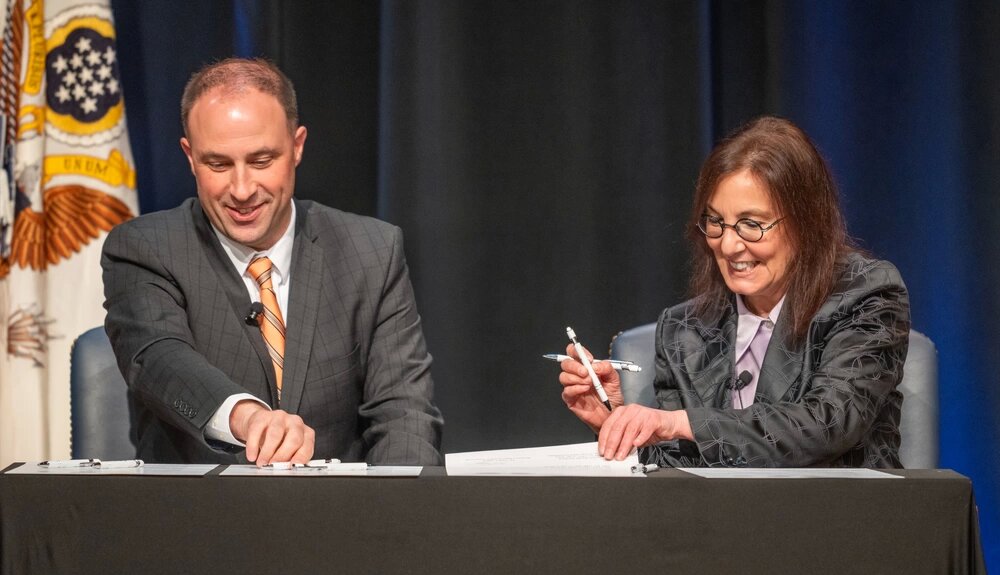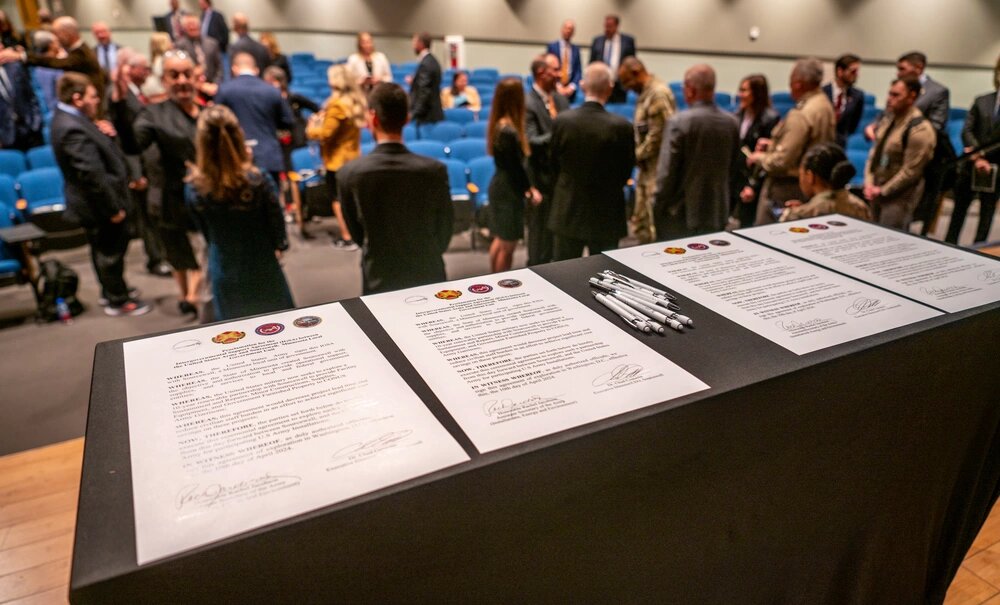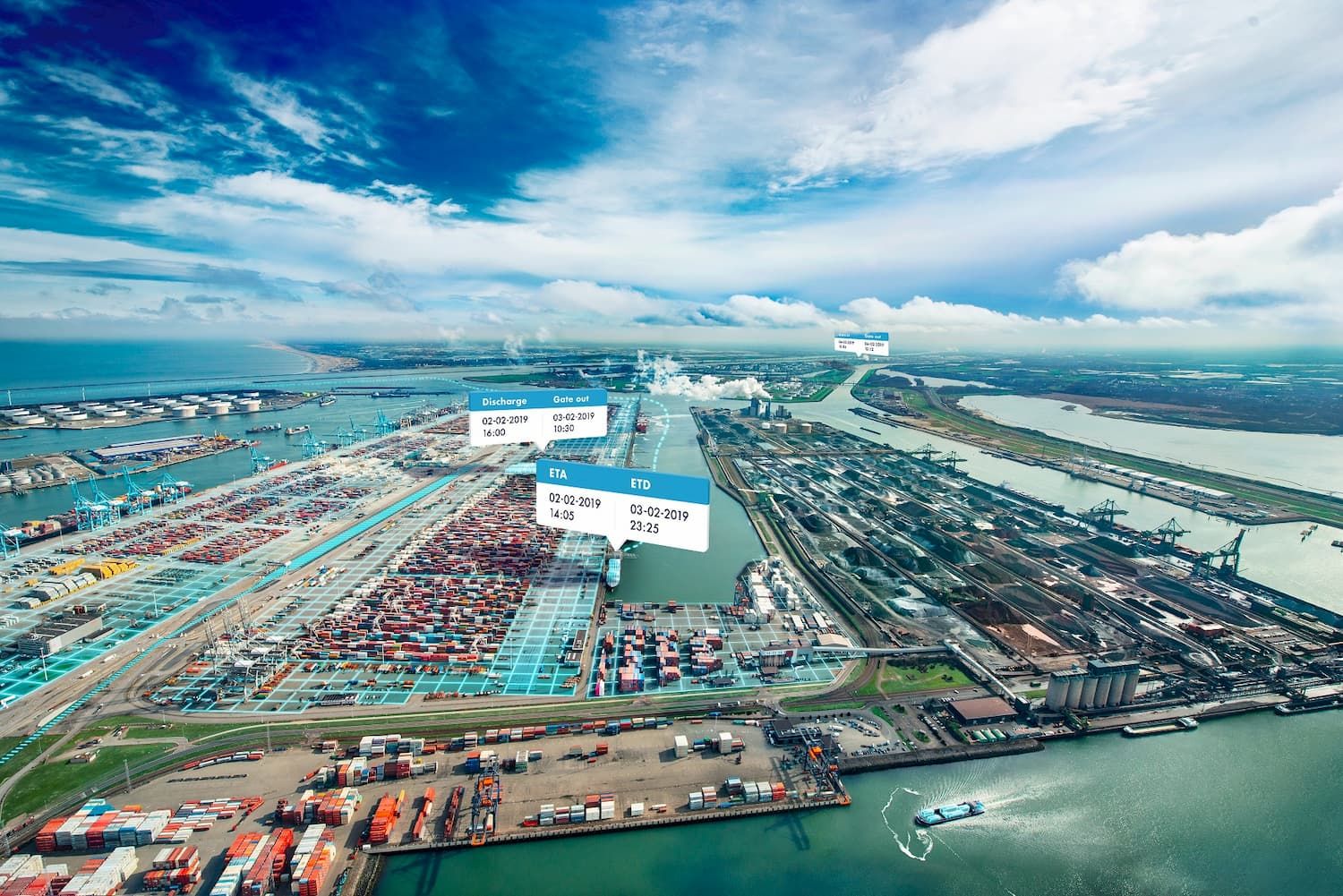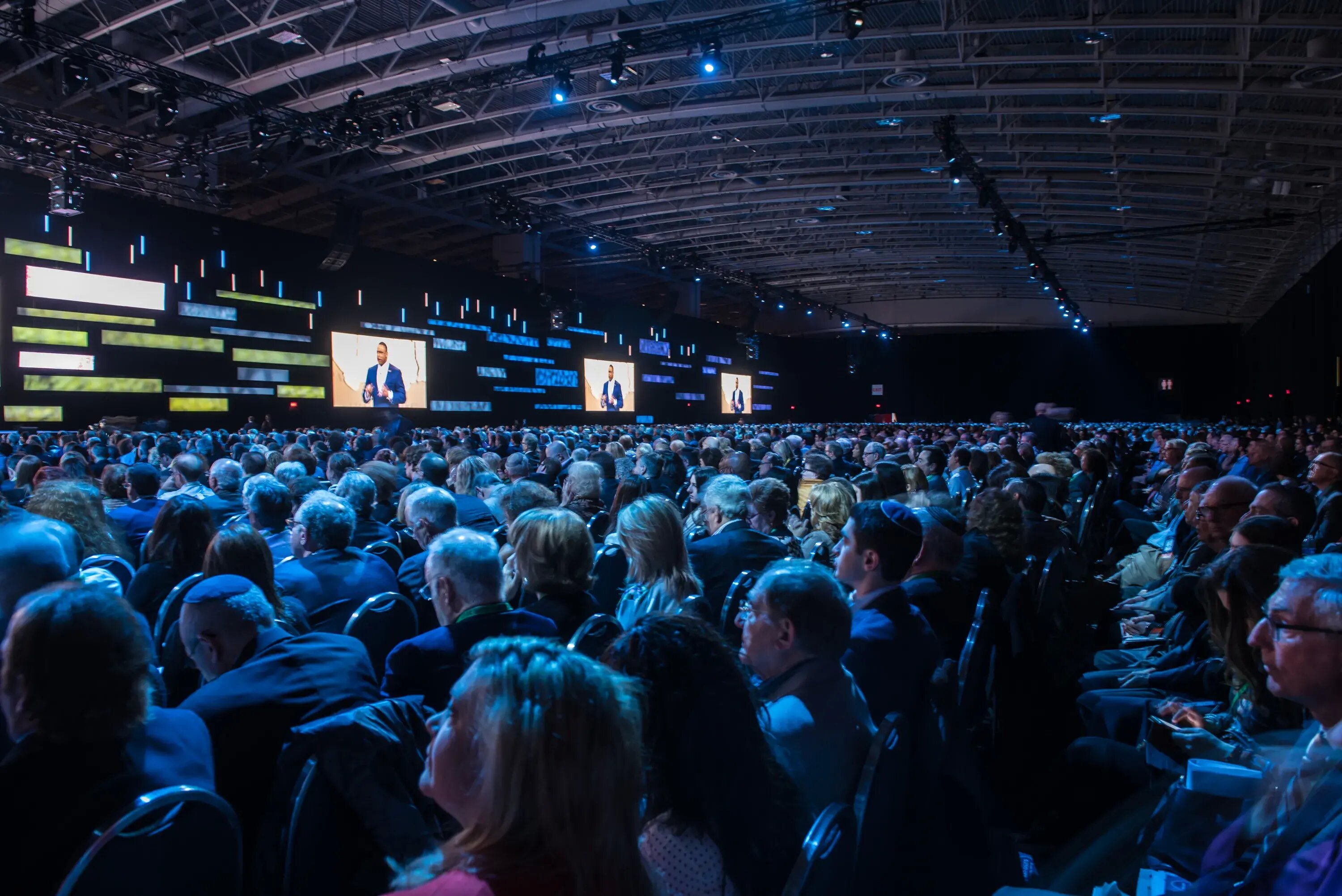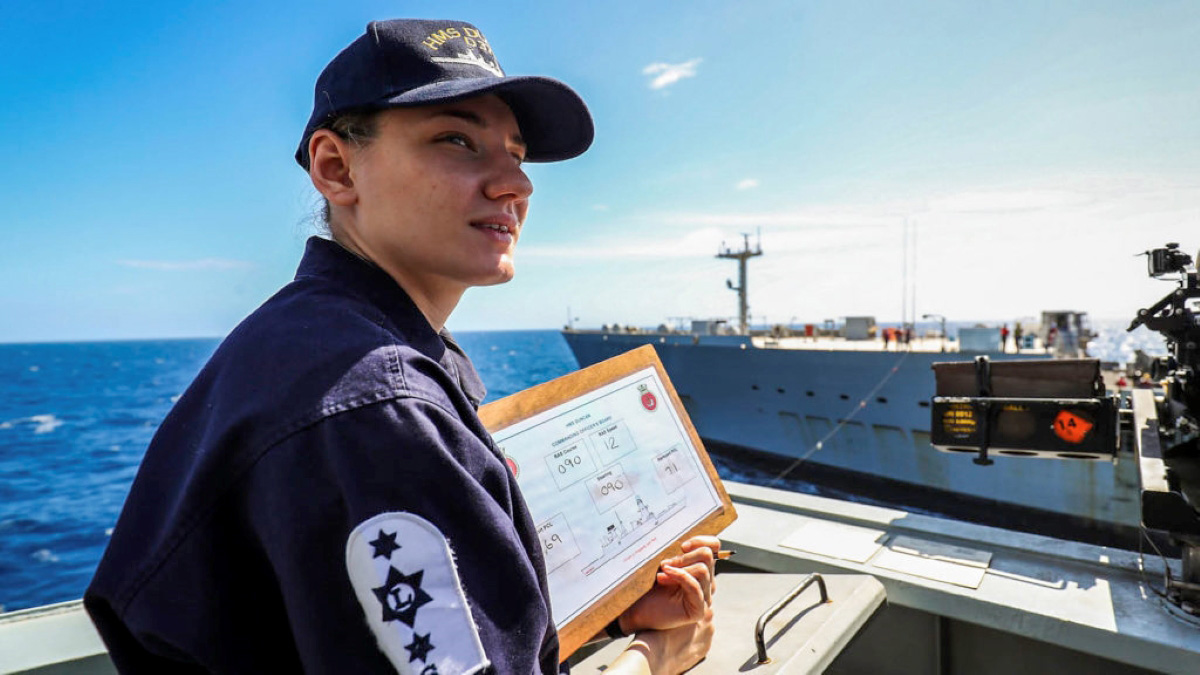About World Ports Organization
World Ports Organization
WPO
Century-Long Leadership in Global Maritime Excellence

Chapter 1・Executive Summary
Chapter 2・Historical Legacy and Institutional Evolution
Chapter 3・Governance Structure and Membership Ecosystem
Chapter 4・Strategic Framework: Mission, Vision, and Core Pillars
Chapter 5・Global Initiatives and Impact Programs
Chapter 6・Socio-Economic Advocacy and Business Promotion: Driving Global Trade, Shipping Innovation, and Corporate Internationalization
Chapter 7・Multilateral Partnerships and Diplomatic Engagements
Chapter 8・Regional Case Studies: WPO’s Localized Interventions
Chapter 9・Financial Sustainability and Resource Mobilization
Chapter 10・Challenges, Risks, and Adaptive Strategies
Chapter 11・2030 Agenda and Future Outlook: Future-Proofing Global Maritime Systems
Chapter 12・Call to Action: Membership Benefits and Collaborative Opportunities
Chapter 13・Appendices
A. Key WPO Policy Documents and Conventions
B. Global Summit Resolutions
C. Statistical Annex: Port Performance Metrics
1. Executive Summary
World Ports Organization (WPO), established , is the preeminent non-governmental entity dedicated to advancing the safety, security, fair competitiveness,responsibility and sustainability of global maritime systems. With a membership network spanning 100+sovereign states, 1500+port authorities, 5,200+ private-sector entities, and 85 intergovernmental bodies, WPO serves as the nexus of maritime diplomacy, technical innovation, and equitable policymaking.
Over its century-long tenure, the organization has:
This document elaborates on the WPO’s operational frameworks, quantifiable achievements, and its roadmap to achieving zero-emission maritime logistics by , as mandated by the United Nations Sustainable Development Goals (SDGs).
2. Historical Legacy and Institutional Evolution
2.1 Founding Principles (1920–1945)
The WPO emerged from the ashes of World War I, when global leaders recognized the need for standardized maritime protocols to revive war-torn economies. Key milestones:
2.2 Post-War Expansion (1946–1975)
The WPO played a pivotal role in post-war reconstruction:
2.3 Modernization and Global Advocacy (1976–Present)
The late 20th and early 21st centuries saw the WPO evolve into a sustainability and innovation leader:
3 – Governance Structure and Membership Ecosystem
3.1 Hierarchical Governance Model
The WPO’s structure ensures inclusivity while maintaining operational agility:
- General Assembly: Biennial summit attended by heads of state, port CEOs, and NGO representatives, Core Global Maritime Corporations. Ratifies resolutions like the Zero-Emission Ports Declaration.
- Executive Council: Composed of 35 voting members (elected regionally) and 10 observer NGOs. Oversees the $2.1 billion annual budget.
-
Technical Advisory Committees (TACs):
- TAC 1: Cybersecurity and AI Ethics – Develops protocols for defending port IT systems against cyberattacks.
- TAC 2: Carbon Neutrality – Validates emissions reporting under the GHG Protocol Corporate Standard.
- TAC 3: Labor Rights – Ensures compliance with International Labour Organization (ILO) conventions.
3.2 Membership Benefits and Obligations
- Tier 1 (Sovereign States): Access to WPO’s $500 million Port Resilience Fund and voting rights in the General Assembly.
- Tier 2 (Port Authorities): Eligibility for ISO 28000 (supply chain security) certification grants and priority technical assistance.
- Tier 3 (Private Sector): Participation in procurement opportunities for WPO-funded infrastructure projects (e.g., LNG bunkering hubs).
4 – Strategic Framework: Mission, Vision, and Core Pillars
4.1 Mission Statement
“To foster a maritime ecosystem where ports are engines of inclusive growth, environmental resilience, and technological progress.”
4.2 Vision for 2050
Achieving a carbon-neutral, cyber-secure, and crisis-resilient global port network by mid-century.
4.3 Five Strategic Pillars
-
Pillar 1: Maritime Safety and Security
- Global Maritime Distress and Safety System (GMDSS): Real-time tracking of 98% of ocean-going vessels via WPO-monitored satellites.
- Anti-Piracy Task Forces: Deployed in the Gulf of Guinea (), reducing hijackings by 61%.
-
Pillar 2: Environmental Stewardship
- WPO Carbon Pricing Mechanism: Mandates $75/ton carbon tax for non-compliant ports, reinvested in renewable energy projects.
- Ballast Water Management Convention Compliance: Trained 12,000+ port inspectors to prevent invasive species spread.
- Mandatory Biodiversity Impact Assessments: All WPO-funded projects must undergo rigorous audits under the PEFP. For example, the expansion of Mumbai Port (India) was approved only after relocating 85% of coral reefs threatened by dredging.
- Plastic Neutrality Commitment: Ports discharging over 1,000 tons/year of marine debris must implement WPO’s Zero Plastic Waste Blueprint, including microfiber filtration systems and circular economy partnerships (e.g., Rotterdam’s recycling hub converts 12,000 tons/year of harbor waste into construction materials).
-
Pillar 3: Innovation and Digital Leadership
- Blockchain for Customs Clearance: Reduced processing times from 5 days to 8 hours at the Port of Singapore.
- Autonomous Ship Trials: Partnered with Rolls-Royce to test unmanned containerships in the Baltic Sea.
-
Pillar 4: Socio-Economic Equity
- Developing Nation Port Upgrades: Funded $320 million in upgrades for Dakar (Senegal) and Chittagong (Bangladesh).
- Maritime Education Hubs: Established in Manila, Lagos, and Valparaíso to train 50,000 workers annually in green technologies.
-
Pillar 5: Ethical Governance and Global Responsibility
WPO enshrines multidimensional accountability as a cornerstone of its mandate, ensuring that port operations align with universal human rights, ecological integrity, and equitable development.
-
Social Responsibility
- Labor Rights Enforcement: The WPO Charter for Fair Port Employment bans forced labor and ensures living wages. In , WPO revoked the membership of three Middle Eastern ports due to migrant worker exploitation, mandating third-party oversight for reinstatement.
- Community Engagement Frameworks: Ports must allocate 2% of annual revenue to local social programs. Brazil’s Santos Port funds vocational training for 5,000 low-income youth annually, reducing urban poverty by 18% in its catchment area.
-
Ethical Governance
- Anti-Corruption Mechanism: A blockchain-based tender platform publicly disclosing all procurement processes, eliminating $270 million in fraudulent port contracts since . Whistleblowers receive protection under the WPO Global Safeguard Policy.
- Conflict Zone Protocol: WPO prohibits member ports from servicing vessels linked to sanctions (e.g., post- Russian oil tankers), enforcing compliance via AIS satellite tracking.
-
Crisis Responsibility
- Humanitarian Logistics Corridors: During the Sudan conflict, WPO coordinated emergency grain shipments through Port Sudan, overriding local bureaucracy via its Article 19 Emergency Powers.
- Disaster Resilience Fund: 15% of membership fees fund rapid port recovery, as seen in the Chile earthquake, where WPO restored Antofagasta’s operations within 72 hours.
-
Global Transparency Reporting
- Annual publication of the WPO Responsibility Index ranks ports on 40 ESG criteria. In , only 22% achieved “Platinum Tier” (e.g., Oslo, Vancouver), while 54% faced penalties for non-compliance.
-
Social Responsibility
5 – Global Initiatives and Impact Programs
5.1 Safety and Security Imperatives
- Port Security Assessment Tool (PSAT): A proprietary algorithm evaluating port vulnerabilities to terrorism, natural disasters, and cyberattacks. Deployed in 230 ports since .
-
Case Study: Securing the Strait of Hormuz
- Challenge: 30% of global oil shipments traversed this high-risk zone.
- WPO Intervention: Funded $200 million in drone surveillance systems and crisis simulation drills.
- Outcome: Zero successful attacks on tankers in .
5.2 Climate Action Initiatives
-
WPO Green Bonds
-
Issued $3.2 billion in climate bonds since , financing:
- Shore-power installations in Long Beach (USA) and Sydney (Australia).
- Mangrove restoration projects in Vietnam’s Mekong Delta, sequestering 2 million tons of CO₂ annually.
-
Issued $3.2 billion in climate bonds since , financing:
-
Hydrogen Corridor Project
- A partnership with Siemenergy to establish hydrogen supply chains between Rotterdam, Hamburg, and Antwerp.
5.3 Digital Transformation Case Study: AI-Powered Port of Shanghai
- Problem: Chronic congestion (avg. 7-day dwell time).
- WPO Solution: Machine learning algorithms optimizing berth allocation and truck routing.
- Result: Dwell time slashed to 1.2 days, positioning Shanghai as the world’s #1 container port (47 million TEUs in ).
5.4 Socio-Economic Advocacy
WPO prioritizes equitable growth by addressing disparities in port-driven economies. Key initiatives include:
- Community-Centric Labor Policies: Mandating fair wages and local hiring quotas (e.g., 40% of port jobs reserved for adjacent communities).
- Inclusive Infrastructure: Co-designing port expansions with marginalized groups, such as women-led cooperatives in West African fisheries.
- Microgrant Programs: Funding small businesses in trade-reliant sectors (e.g., $10,000 grants for coastal agro-exporters in Southeast Asia).
- Public Health Partnerships: Mitigating air/noise pollution through green buffer zones and subsidized healthcare for port workers.
6 – Business Promotion
Driving Global Trade, Shipping Innovation, and Corporate Internationalization
WPO plays a pivotal role in advancing international trade, fostering maritime business ecosystems, and accelerating corporate participation in global markets. Through strategic frameworks, partnerships, and digital transformation, the WPO empowers ports and maritime enterprises to become catalysts for economic growth. Below are the key initiatives under its Business Promotion pillar:
6.1 Trade Facilitation & Market Expansion
-
Global Trade Corridors:
WPO identifies and invests in high-impact shipping routes, prioritizing connections
between emerging economies (e.g., Africa-Asia green corridors) and established hubs.
- Example: The Trans-African Maritime Network (launched ) reduced cargo transit times by 25% through harmonized customs procedures and shared digital documentation.
-
SME Empowerment:
Supports small and medium enterprises in accessing global markets via:
- Trade Matchmaking Platforms: AI-driven portals linking exporters/importers with logistics partners.
- Capacity Building: Training programs on international compliance (e.g., INCOTERMS 2024, ESG reporting).
-
Supply Chain Resilience:
Advocates for diversification of critical supply chains through:
- Regional Backup Hubs: Strategic ports equipped for rapid rerouting during disruptions (e.g., pandemic response).
- Blockchain Pilot Projects: Transparent tracking of goods from origin to final delivery.
6.2 Maritime Industry Collaboration
-
Public-Private Partnerships (PPPs):
Co-develops port infrastructure with corporates and financial institutions under structured risk-sharing models.
- Outcome: Mobilized $50 billion in private capital for port-modernization projects since .
-
Smart Port Acceleration Programs:
Promotes adoption of AI-driven logistics, automated terminals, and IoT-enabled cargo handling.
- Case Study: Partnering with Big-5 Maritime Corporations and IBM, WPO’s Smart Ports Lab cut vessel turnaround times by 30% at 15 pilot ports.
-
Green Shipping Coalitions:
Incentivizes low-carbon shipping through:
- Carbon Credit Markets: Linking port emissions reductions to tradable credits.
- Alternative Fuel Hubs: Subsidizing ammonia/hydrogen bunkering infrastructure.
-
Digital Hub:
The revised launch of WPO digital hub in marked a paradigm shift in maritime collaboration, serving as:
-
Global Trade Intelligence Platform
- Provides real-time data on cargo flows, tariff changes, and ESG regulations across 150+ countries
- Example: Customs clearance times reduced by 18% for SMEs using its AI powered compliance checker
-
Collaborative Ecosystem for Innovation
- Hosts digital twin simulations of port operations,enabling members to test automation strategies virtually
- Featured Project: The Baltic Sea Traffic Optimization Tool () decreased congestion by 22% through predictive analytics
-
Standardization Resource Center
- Offers free access to harmonized protocols for cargo handling, cybersecurity, and GHG accounting
- Supports the WPO’s Zero-Paper Port Initiative (target: 100% digital transactions by )
-
Multilateral Negotiation Portal
- Facilitates diplomatic dialogues on disputes (e.g., South China Sea) with encrypted negotiation rooms and arbitration tracking.
-
Public Engagement Gateway
- Showcases success stories (e.g., green corridor projects) and crowdsources solutions through its Port Innovation Challenges.
- Impact: 3,000+ startups and researchers engage annually via its open-data repository.
-
Global Trade Intelligence Platform
6.3 Corporate Internationalization Support
-
Global Business Incubators:
Launches port-adjacent innovation zones offering tax incentives, R&D funding, and mentorship to multinational firms.
- Example: The Singapore Maritime Tech Valley attracted 200+ startups in autonomous shipping and drone logistics
-
Cross-Border Investment Frameworks:
Simplifies regulatory approvals for foreign direct investment (FDI) in port-related industries.
- Key Policy: The WPO Fast-Track FDI Charter () slashes approval timelines by 60% for greenfield terminals
-
Talent Mobility Initiatives:
Addresses maritime skill gaps via:
- Global Port Management Fellowships: Training 2,000 executives annually in digitalization and sustainability.
- Seafarer Exchange Programs: Rotating crew between regions to enhance cross-cultural competency.
6.4 Financing & Risk Mitigation
-
Innovative Financial Instruments:
- Blue Bonds 2.0: Links bond proceeds to measurable SDG outcomes (e.g., mangrove restoration near ports)
- Trade Credit Guarantees: Backed by the WPO to de-risk SME participation in cross-border contracts
- Geopolitical Risk Insurance: Offers coverage for trade disruptions caused by territorial disputes or sanctions, underwritten by multilateral agencies
6.5 Metrics for Success (2023-2030)
- Trade volume growth via WPO hubs: +15% annually
- Corporate FDI in port ecosystems: $200 billion cumulative
- Carbon-neutral shipping lanes: 100 global routes
- SME digital adoption rate: 80% of registered firms
By aligning business promotion with sustainability and equity, the WPO ensures that globalized trade benefits all stakeholders—from megaports to coastal communities. Its strategy not only drives economic prosperity but also redefines the role of ports as innovation hubs in a multipolar world.
7 – Multilateral Partnerships and Diplomatic Engagements
Strategic Collaborative Network
WPO has established an extensive multilateral partnership network involving international organizations, sovereign states, and private-sector entities to strengthen global maritime governance:
-
Collaboration with the International Marine Organization
- Global Sulfur Cap Enforcement (since ): Jointly developed a low-sulfur fuel monitoring system covering 90% of global commercial ships, reducing sulfur oxide emissions by 8.6 million tons annually.
- Polar Shipping Regulations: Co-published the Arctic Route Safety Guidelines (), mandating icebreaker escort standards, reducing Arctic route accidents by 42%.
-
World Banks Co-Financing Programs
- Africa Smart Ports Initiative (–): Invested $1.4 billion automating 35 African ports, including Mombasa Port (Kenya) where AI scheduling increased throughput by 29%.
- Small and Medium Ports Fund: Provided low-interest loans (avg. $20 million) to 100 ports in Latin America and Southeast Asia.
-
EU Green Deal Synergies
- North Sea Offshore Wind Hub (launched ): Renewable energy grid linking Rotterdam, Antwerp, and Hamburg powering ports with 100% green energy.
- Digital Shipping Corridor Pilot: Blockchain-based cargo tracking in the Baltic Sea, reducing customs fraud by 67%.
Diplomatic Impact Mechanisms
- Annual Maritime Summit: Parallel forum to COP co-hosted by WPO, achieving the Zero-Waste Ports Pact endorsed by 78 nations.
- Sanctions Coordination: Partnered with national institutions to freeze $830 million in assets tied to illegal fishing and corruption ().
8 – Regional Case Studies
Case Study 1: Southeast Asia Port Resilience Program
- Context: Annual typhoon-related losses exceeded $1.5 billion; Manila Port (Philippines) paralyzed for two weeks during Typhoon Rai ()
-
Interventions:
- Flood Defense: Raised embankments to 8 meters and installed smart water-level sensors
- Emergency Energy: Deployed solar-hydrogen hybrid stations providing 72-hour autonomous power
- Result: During Typhoon Haiyan (), port closure duration reduced to 12 hours with 92% reduction in cargo losses
Case Study 2: West Africa Anti-Piracy Coalition
- Context: Gulf of Guinea accounted for 58% of global pirate attacks in
-
WPO Actions:
- Rapid Response Fleet: Nigerian-Ghanaian naval force of 12 patrol boats with drone surveillance
- Crew Training: Conducted anti-hijacking drills for 2,800 West African sailors
- Result: Pirate incidents reduced to 19 in (from 67 in ), ransom payments decreased to $27 million
9 – Financial Sustainability and Resource Mobilization
Revenue Structure ( Data)
- Membership Fees: 45% of total revenue
- Green Bonds: Raised $4.8 billion at 2.3% average interest rate (1.5% below market average)
- Public/IGO Funding: Includes EU's Connecting Europe Facility grants for digital infrastructure
Funding Allocation Priorities
-
Tech R&D:
35% invested in AI port simulators and carbon-capture pilots
- Example: Rotterdam’s Port Carbon Sink Program
-
Global South Support:
28% allocated to port upgrades in low-income countries
- Benefited 33 nations in
-
Crisis Reserve:
15% of annual revenue held for emergencies
- Case: Diverted $210 million during the Red Sea crisis
10 – Challenges, Risks, and Adaptive Strategies
Core Risk Matrix
-
Geopolitics
- Specific Risk: Sovereignty disputes disrupting trade
- Mitigation Strategy: Established multilateral arbitration mechanism
-
Funding Gaps
- Specific Risk: Underfunded port upgrades in LDCs
- Mitigation Strategy: Launched Blue Bond Initiative (target: $5 billion by )
-
Tech Divide
- Specific Risk: Small ports lacking smart infrastructure
- Mitigation Strategy: Technology Sharing Pools (open access to AI/automation patents)
-
Climate Disasters
- Specific Risk: Coastal ports vulnerable to sea-level rise
- Mitigation Strategy: Resilience Plans (100-year flood defense standards)
11 – 2030 Agenda and Future Outlook
Decade of Transformation (–)
-
Zero-Carbon Port Network:
- : Enact Renewable Energy Access Standard — 50 major ports require ≥40% renewables
- : Complete global hydrogen bunkering network (120 stations) across key routes
-
Cyber Resilience:
- : Open Cyber Warfare Simulation Center (Singapore)
- : Deploy quantum-encrypted systems for all Tier 1 ports (IBM collaboration)
-
Blue Economy Expansion:
- : Finalize Deep-Sea Mining Regulations — 20% revenue sharing with coastal communities
- –: Designate 15 Green Anchorages near MPAs (ban high-pollution vessels)
Strategic Milestones
- : 80% digital maturity assessments completed (WPO DMI Index)
- : 50% reduction in shipping carbon intensity (vs. )
- : 100% SDG 14 compliance
WPO Transformation Priorities
- 100% Renewable Energy: 50 major ports by
- Global Port Cyber Shield: Real-time monitoring for 100% Tier 1 ports
- Blue Economy Fund: Mobilizing $10 billion for sustainable fisheries and offshore wind project.
12 – Call to Action
Exclusive Member Benefits
- WPO's Global Port Benchmarking System tool: Compare KPIs across 1300+ global ports
- Digital Training Initiative: Access subsidized courses through Virtual Maritime Academy
- Global Summit Access: Networking at the Annual WPO Invitation Expro,Next Priority entry to Innovation Expo in Dubai
13 – Appendices
Appendix A: Legal Instruments
-
WPO Climate Adaptation Charter
()
- Mandates port-level climate vulnerability assessments
-
Rotterdam Convention on Hazardous Cargo
()
- Establishes Prior Informed Consent (PIC) procedures
Appendix B: Performance Metrics
-
Top 10 Port Sustainability Rank
( edition)
- Assessed via WPO Green Port Index v3.2
- Ranking published biennially since
Secretary-General of World Ports Organization (WPO)
Dr. Alexander Éric Dubois

Captured moments by our clients
WORLD PORTS ORG: NAVIGATING TOMORROW, ANCHORING GLOBAL PROGRESS!
From the ashes of to our zero-emission vision for , we chart history with steel giants and ignite civilizations through smart harbors and maritime!
Beacon of Innovation: Safety Without Borders, Trade Without Limits, Innovation Without Ceiling!40% Plunge in Maritime Incidents | 50% Carbon Slash Blueprint | 300% Efficiency Revolution
— proof of our ironclad commitments!
We are WORLD PORTS ORG —
Guardians of the Ocean Economy, Architects of Humanity's Interconnected Destiny!
Find your way to us
Erasmus Tower, 40th Floor
Post Office Box 8530
3009 AM Rotterdam
The Netherlands
UTC Timezone:

